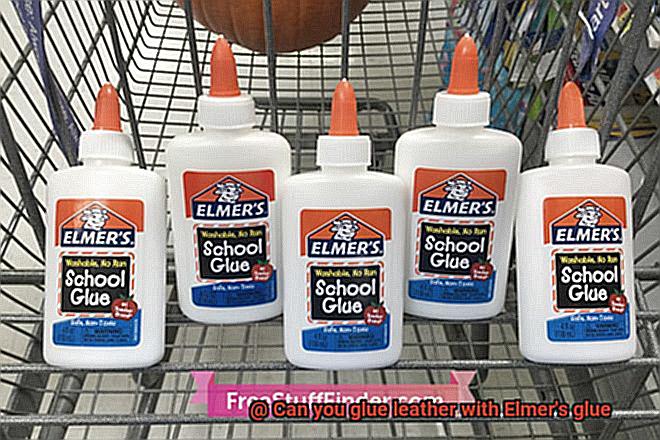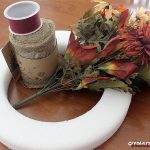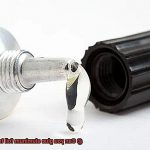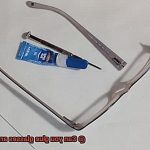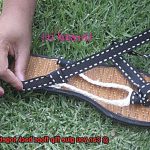When it comes to fixing or creating leather goods, finding the right adhesive can be a real headache. But have you ever wondered if good old Elmer’s glue could do the trick? That trusty bottle sitting on your craft shelf has been a go-to for all sorts of materials, so why not give it a shot with leather?
In this blog post, we’re going to dive into the world of gluing leather with Elmer’s glue. We’ll walk you through the process, highlight its perks, and shed light on any potential downsides. So if you’ve ever pondered whether these two could make a winning combo, let’s put it to the test.
Advantages of using Elmer’s glue:
One of the best things about using Elmer’s glue for leather is that it’s super accessible. You probably already have a bottle lying around at home or school, and if not, it won’t break the bank to grab one from your local craft store. It’s perfect for those on a budget or in need of a quick fix.
Another advantage is that Elmer’s glue is non-toxic and user-friendly. It dries clear, which is great for projects where looks matter. Plus, when used correctly, it can provide a pretty sturdy bond for lightweight applications like attaching trims or embellishments to leather.
Process for gluing leather with Elmer’s glue:
Before diving into the gluing process itself, you’ll want to prep your leather surface properly. Give it a gentle cleaning with some mild soap and water to remove any dirt or oils that might interfere with adhesion. Once clean, let it dry completely.
Now comes the fun part. Apply a thin layer of Elmer’s glue onto both surfaces you want to stick together, making sure you cover them evenly. Press the surfaces together and hold them in place for a few minutes to ensure a secure bond. Then, let it dry according to the instructions on the bottle.
Disadvantages and considerations:
Here’s the catch: while Elmer’s glue can work as a temporary adhesive for lightweight leather projects, it might not hold up for heavy-duty tasks. Over time, the glue could weaken or wear off, especially with constant use or exposure to moisture.
Another thing to keep in mind is that Elmer’s glue isn’t specifically designed for leather applications. It might struggle to withstand the flexibility
What is Elmer’s Glue?
Contents
- 1 What is Elmer’s Glue?
- 2 What is Leather?
- 3 Why Is Elmer’s Glue Not Ideal for Bonding Leather?
- 4 In What Cases Can Elmer’s Glue Be Used on Leather?
- 5 What Adhesives Are Recommended for Bonding Leather?
- 6 How to Prepare the Leather Before Applying Adhesive?
- 7 Testing the Adhesive on a Small Area of the Leather
- 8 Conclusion
When it comes to finding the perfect adhesive for your crafting, school, or household projects, Elmer’s Glue is a name that stands out. With its iconic white, viscous formula and exceptional bonding properties, Elmer’s Glue has become a go-to brand for crafters and DIY enthusiasts worldwide. In this comprehensive guide, we will explore the properties and formulations of Elmer’s Glue, as well as delve into its various applications and limitations.
Properties and Formulations:
Elmer’s Glue is primarily composed of polyvinyl acetate (PVA), a synthetic polymer renowned for its excellent bonding capabilities. This water-based adhesive offers several advantages, including easy cleanup with water while still wet, making it ideal for projects involving children or requiring frequent adjustments.
Elmer’s Glue boasts an extensive range of formulations tailored to specific project needs. The classic Elmer’s School Glue is perfect for bonding porous materials such as paper, cardboard, and fabric. Its clear and flexible drying properties make it an excellent choice for school projects or crafts that require a less rigid bond.
For woodworking enthusiasts, Elmer’s Carpenter’s Wood Glue is specially designed to provide a strong hold on wood surfaces. This variant is moisture-resistant and dries to a natural yellowish color, adding an aesthetic touch to wooden projects.
Elmer’s versatile range also includes specialized glues such as Elmer’s CraftBond, which is perfect for intricate crafts, Elmer’s Washable No-Run School Glue for easy cleanup, and Elmer’s All-Purpose Glue Stick for mess-free application.
Applications and Limitations:
Elmer’s Glue can be used in a wide array of projects, including arts and crafts, school assignments, woodworking, and general household repairs. It bonds materials like paper, cardboard, fabric, wood, and many others with ease, providing a reliable and durable hold.
However, when it comes to gluing leather, it is important to note that Elmer’s Glue may not be the best choice for permanent or structural applications. While it can be used on leather for temporary bonding of small pieces or non-structural purposes, specialized leather glues are recommended for long-lasting and secure bonds. These dedicated adhesives often contain ingredients like rubber or polyurethane, providing enhanced adhesion and flexibility specifically designed for leather.
What is Leather?
Leather, a material beloved by many, is a versatile and enduring substance that has been utilized for centuries. Derived from the hides or skins of animals such as cattle, sheep, and goats, leather undergoes a series of meticulous steps to transform raw materials into stunning finished products.
What sets leather apart is its remarkable strength. The natural fibers present in animal hide grant leather the ability to withstand the test of time, making it an ideal choice for items like shoes, bags, belts, and furniture upholstery. Moreover, leather possesses an incredible flexibility that allows it to conform to the contours of the wearer or object it adorns.
Let’s delve into the diverse types of leather available. Full-grain leather reigns supreme as the epitome of excellence. It retains the natural grain and imperfections of the animal hide, resulting in a distinctive appearance cherished by many. Another favored option is top-grain leather, where the outer layer is meticulously sanded and treated to eliminate any blemishes.
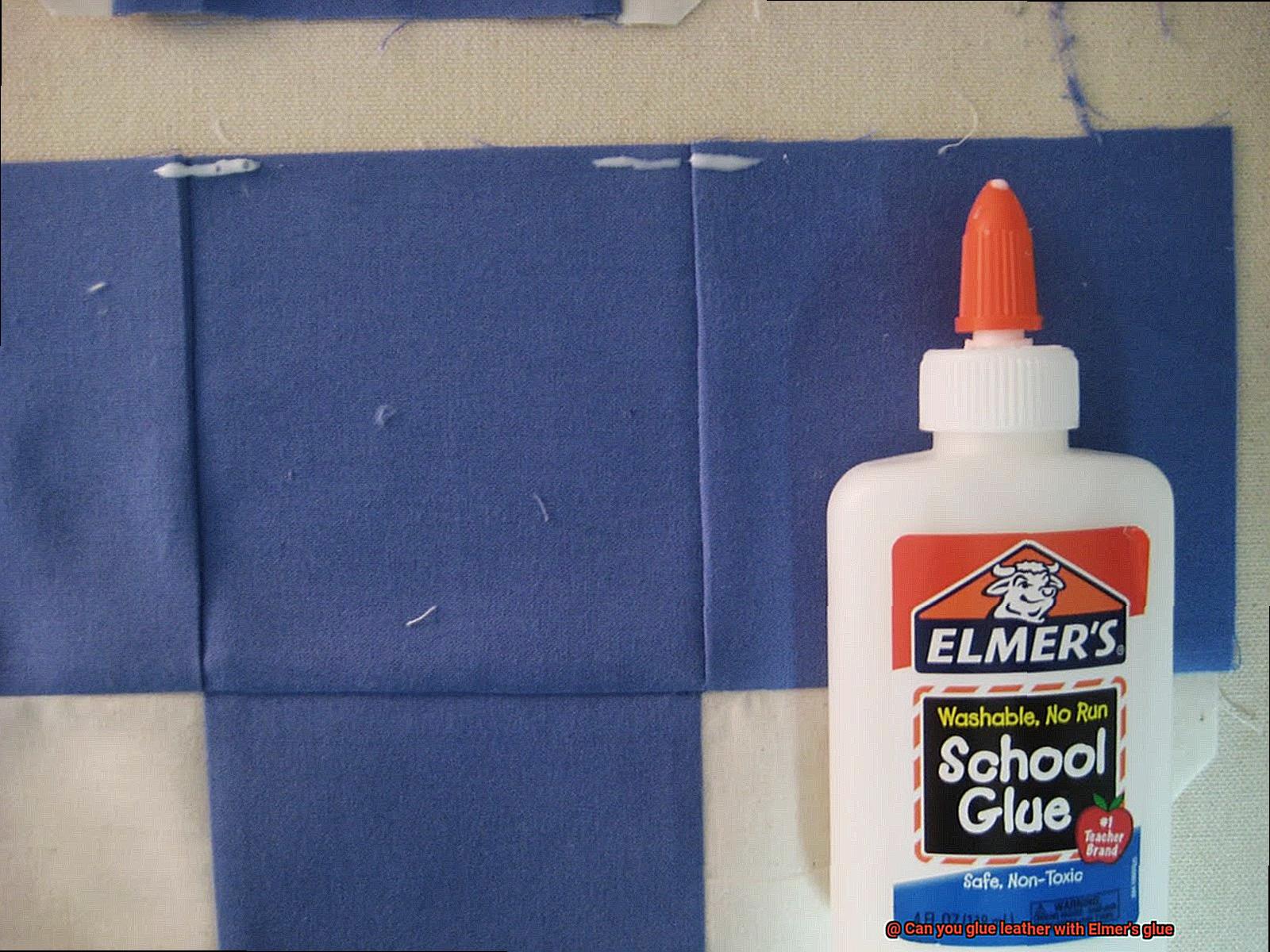
But wait, there’s more. Corrected grain leather boasts an artificial grain applied to mask any flaws, while bonded leather consists of shredded leather scraps combined with a bonding agent. These alternatives may be more budget-friendly but are generally less durable than their full-grain or top-grain counterparts.
To enhance both aesthetics and performance, leather can be treated with various finishes. Aniline leather undergoes treatment with transparent dye to preserve the natural look of the hide. Alternatively, pigmented leather receives a protective coating that enhances its resistance against stains and scratches.
Why Is Elmer’s Glue Not Ideal for Bonding Leather?
Leather, with its strength and versatility, is a coveted material for various applications. When it comes to bonding leather, it is essential to choose the right adhesive to ensure a durable and reliable bond. While Elmer’s glue may be a popular choice for crafts, it falls short when it comes to bonding leather. In this article, we will explore the reasons why Elmer’s glue is not suitable for leather applications and discuss alternative adhesives that are better suited for this purpose.
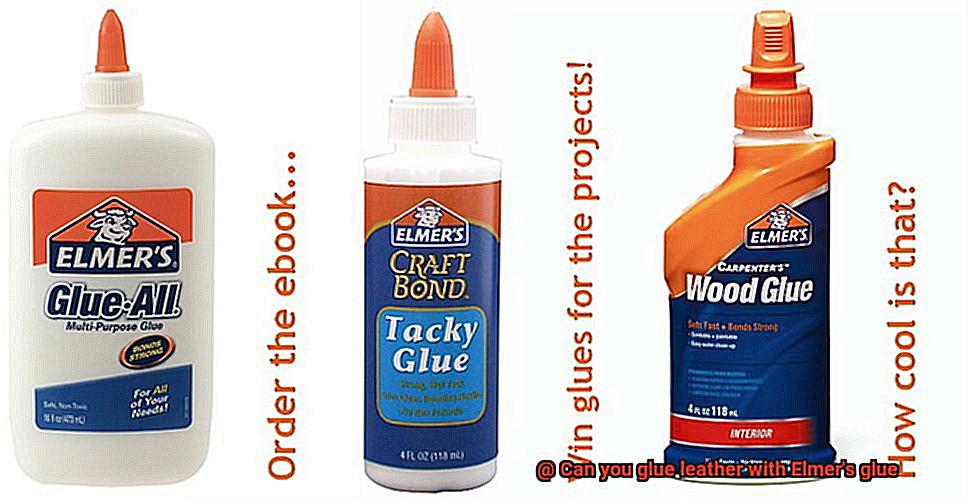
Unsuitability for Non-Porous Materials:
- Elmer’s glue is primarily designed for porous materials such as paper and fabric.
- Leather, however, is a non-porous material with a smooth surface.
- The adhesive properties of Elmer’s glue are not well-suited for creating a strong bond on this type of surface.
- The glue may not effectively penetrate the leather fibers, resulting in a weak bond that easily breaks apart.
Lack of Durability in Varying Environmental Conditions:
- Leather items are often subjected to different environmental conditions such as heat, humidity, and moisture.
- Elmer’s glue, being water-based, is susceptible to damage from moisture.
- Excessive moisture or humidity can weaken or dissolve the glue, leading to bond failure.
- Leather requires an adhesive that can withstand these challenges and provide long-lasting durability.
Inadequate Properties for Leather Applications:
- Leather needs an adhesive that offers both flexibility and strength.
- Elmer’s glue dries to a soft and flexible finish, which may be suitable for certain craft projects but not ideal for bonding leather.
- Leather requires a strong and durable bond that can withstand frequent use and stress.
- The soft and flexible nature of Elmer’s glue may not provide the level of strength required for leather applications.
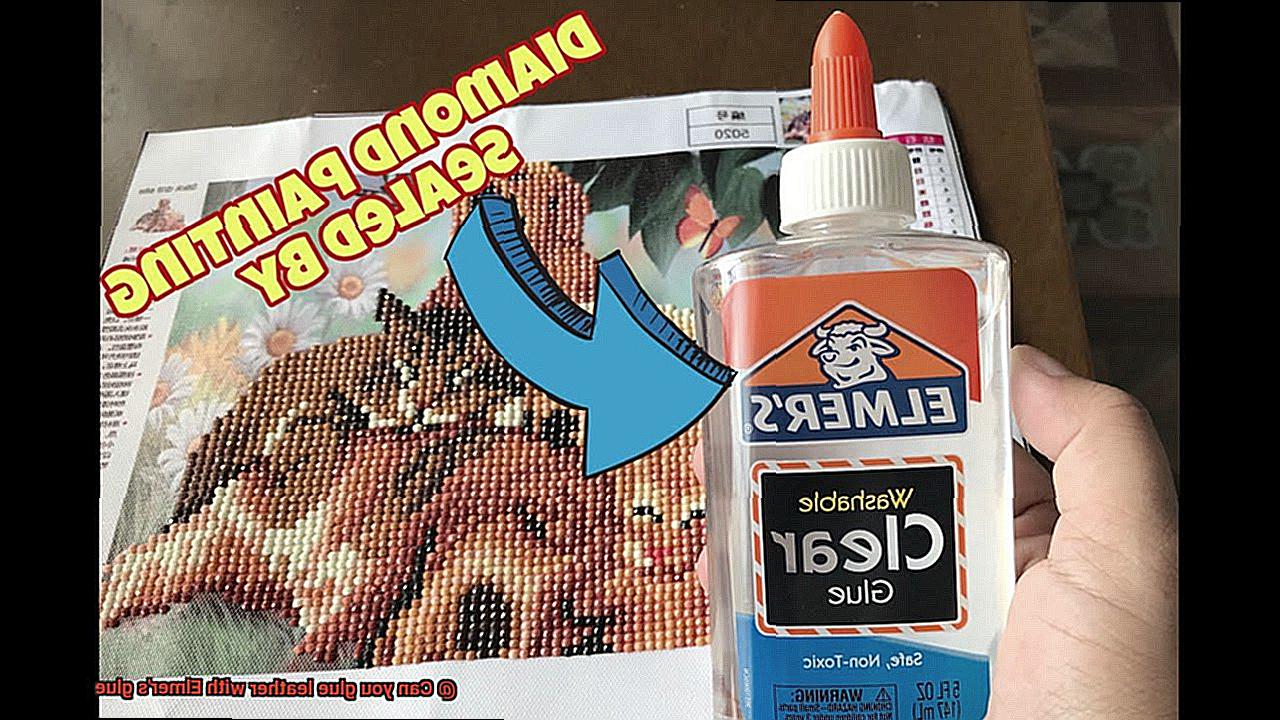
Alternative Adhesives for Bonding Leather:
- Leather glue or contact cement are better options as they offer better bonding capabilities, durability, and flexibility.
- These specialized adhesives provide the strength and flexibility required to ensure a long-lasting and reliable bond for your leather projects.
In What Cases Can Elmer’s Glue Be Used on Leather?
When it comes to using Elmer’s glue on leather, it’s important to understand its limitations and when it can be used effectively. Elmer’s glue is a popular adhesive commonly used for crafts and projects, but not all types of leather are suitable for this adhesive. Let’s explore in what cases Elmer’s glue can be used on leather.
Firstly, the type of leather being used is a crucial factor to consider. Elmer’s glue works best on genuine leather, also known as full-grain or top-grain leather. This type of leather has a smooth surface and is less porous compared to other types. So, if you’re looking to repair a torn seam or attach a patch, Elmer’s glue can come to the rescue.
When using Elmer’s glue on leather, it’s important to apply it sparingly and evenly. Excess glue can seep through the leather or cause discoloration, which is something nobody wants. To ensure a secure bond, apply pressure on the glued area for a few minutes. This can be done using clamps or by placing a heavy object on top. Just make sure that the weight won’t damage your precious leather.
Here’s a handy tip: Elmer’s glue is perfect for non-load-bearing applications on leather. If you’re attaching decorative elements or embellishments to your leather creations, go ahead and grab that bottle of Elmer’s glue. It provides a temporary bond and can be easily removed if needed.
However, Elmer’s glue is not a one-size-fits-all solution for all your leather needs. For load-bearing applications or high-stress areas like repairing shoes or handbags, it’s best to opt for specialized adhesives specifically designed for leather bonding. You wouldn’t want your favorite pair of boots falling apart while you strut your stuff, right?

Another important thing to note is that Elmer’s glue should not be used on suede or nubuck leather. These delicate surfaces require special care and should be bonded using appropriate suede adhesives.
Before you start gluing your leather project, it’s crucial to test a small, inconspicuous area first. This way, you can ensure compatibility and check for any adverse reactions. Better safe than sorry, right?
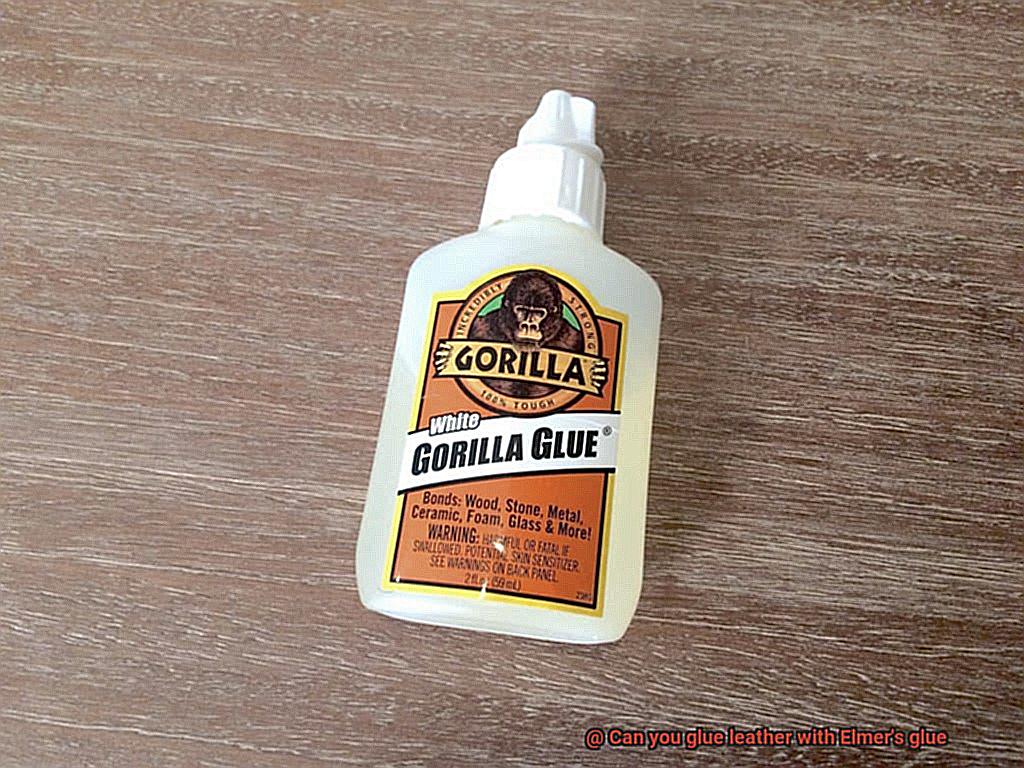
Lastly, make sure to read the instructions on the label of your Elmer’s glue. Different variants may have different drying times and properties, so following the instructions will give you the best results.
What Adhesives Are Recommended for Bonding Leather?
Choosing the right adhesive is crucial for creating a strong and durable bond when it comes to bonding leather. Whether you’re repairing a cherished handbag or embarking on a DIY leather project, understanding the different adhesive options available will ensure your success. In this comprehensive guide, we’ll explore the top adhesive choices for bonding leather, providing tips and recommendations to help you make an informed decision.
Leather Cement:
Leather cement is hailed as the go-to adhesive for bonding leather due to its liquid form and clear drying properties. Whether you’re fixing shoes or mending belts, this versatile adhesive is ideal. Remember to follow the manufacturer’s instructions carefully when applying leather cement to ensure optimal adhesion.
Contact Cement:
For quick drying time and excellent adhesion properties, contact cement is a popular choice for bonding leather. Available in water-based and solvent-based formulations, applying a layer of adhesive to both surfaces before joining them together creates a strong bond.
Epoxy Adhesive:
Versatile epoxy adhesives can bond leather to non-porous surfaces like metal or plastic. While they provide a strong bond, epoxy adhesives may not be as flexible as other options, making them better suited for specific leather applications.
Hot Glue:
For small projects or temporary repairs, hot glue can be an effective option. Using a hot glue gun, melted glue is applied to the leather surface before pressing the two pieces together. However, keep in mind that hot glue may not offer the same level of strength and durability as other adhesives.
Super Glue:
Super glue, also known as cyanoacrylate adhesive, provides an instant bond upon contact with moisture. While it can be effective for bonding leather, it’s essential to choose a super glue specifically formulated for porous materials like leather.
How to Prepare the Leather Before Applying Adhesive?
Whether it’s a wallet, belt, or stylish handbag, the key to success lies in preparing the leather before applying adhesive. This blog post will guide you through essential steps to ensure your glue bonds securely and lasts a lifetime.
Step 1: Clean and Shine
Before gluing anything, give your leather a gentle bath. Dip a soft cloth or sponge into a mixture of mild soap and water, and scrub away lurking dirt, grime, and oils. Rinse off the soap residue and let your leather dry completely. Ah, it’s shining like new.
Step 2: Bye-Bye Old Adhesive
Bid farewell to old adhesive on your leather. Use a special adhesive remover designed for leather or even rubbing alcohol can do the trick. Apply it on a clean cloth and gently rub away the old adhesive until it dissolves into thin air. Wipe off any residue, and voila.
Step 3: Rough and Tough
Time to roughen things up. Give your leather a gentle massage with fine-grit sandpaper or an abrasive pad. Rub in circular motions with just enough pressure to create a slightly rough texture. This makes your leather super receptive to the adhesive’s magic powers.
Step 4: Condition and Pamper
Your leather deserves some pampering too. Moisturize and protect it by applying a leather conditioner or primer. Follow the instructions on the bottle and spread the love evenly across the surface. Let it dry completely, watching your leather soak up all that goodness.
Step 5: Test and Trust
Before diving headfirst into gluing everything together, test the waters first. Apply a tiny amount of adhesive on a hidden corner, press the leather together firmly, and wait for the recommended drying time. Check if it holds strong. If all looks good, you’re ready to glue away.
Testing the Adhesive on a Small Area of the Leather
Whether it’s a beloved handbag with a loose strap or a worn-out wallet begging for repair, it’s crucial to test the adhesive on a small area of the leather before diving into the restoration process.
Leather, with its unique characteristics and delicate nature, demands a special adhesive that can bond effectively without causing any damage or discoloration. That’s why testing the glue is an absolute must.
So, how do you go about this testing process? Let’s break it down step by step.
First things first, choose a small, inconspicuous area of the leather to test on. You don’t want to ruin the overall appearance of your cherished item, after all. The backside or an interior section are good options for this purpose.
Before applying the glue, make sure you clean and prepare the surface properly. Any dirt, dust, or oils can hinder the adhesive’s ability to bond effectively. Gently wipe away these impurities using a mild leather cleaner or a damp cloth. Let the leather dry completely before moving forward.
Now it’s time to apply a small amount of Elmer’s glue to the selected area. Use a brush or applicator to spread an even layer of glue on the surface, covering the entire area where you intend to bond or repair.
Patience is key at this point. Allow the glue to dry according to the manufacturer’s instructions. Rushing this step may result in a weak bond or premature failure.
Once the glue has dried, carefully examine the bonded area. Look out for any signs of discoloration, stiffness, or damage. If everything looks good and the bond appears strong and secure, it’s likely that Elmer’s glue is suitable for your leather item.
However, keep in mind that this test is not foolproof. Different types of leather may react differently to various adhesives. Factors like temperature, humidity, and the specific use of the item can also affect the adhesive’s performance over time.
To gain a better understanding of the long-term durability and compatibility of Elmer’s glue on your specific leather item, it’s always a good idea to consult with a professional leatherworker or conduct further testing on a less visible part of the material.
So, next time you find yourself in need of gluing leather, take the time to test the adhesive on a small area. By following these steps and considering the unique properties of your leather item, you’ll be able to make an informed decision and ensure that your repair job stands the test of time.
V4_EaCHcyNY” >
Also Read: Is Elmer’s Glue Waterproof?
Conclusion
Yes, you can use Elmer’s glue to bond leather together. Elmer’s glue is a versatile adhesive that can work on various materials, including leather. Its strong bonding properties make it suitable for joining leather pieces or repairing small tears and cracks in leather items.
However, it’s important to note that while Elmer’s glue can be effective for basic leather bonding tasks, it may not provide the same level of durability and longevity as specialized leather adhesives. Leather is a unique material that requires specific adhesives designed to withstand its unique characteristics.
If you’re working on a project that involves heavy-duty use or requires a long-lasting bond, it’s recommended to invest in a high-quality leather adhesive specifically formulated for this purpose. These specialized adhesives are designed to provide superior strength and flexibility, ensuring your leather items stay intact even under stress.
In conclusion, while Elmer’s glue can temporarily bond leather together, it may not offer the same level of durability as dedicated leather adhesives.

